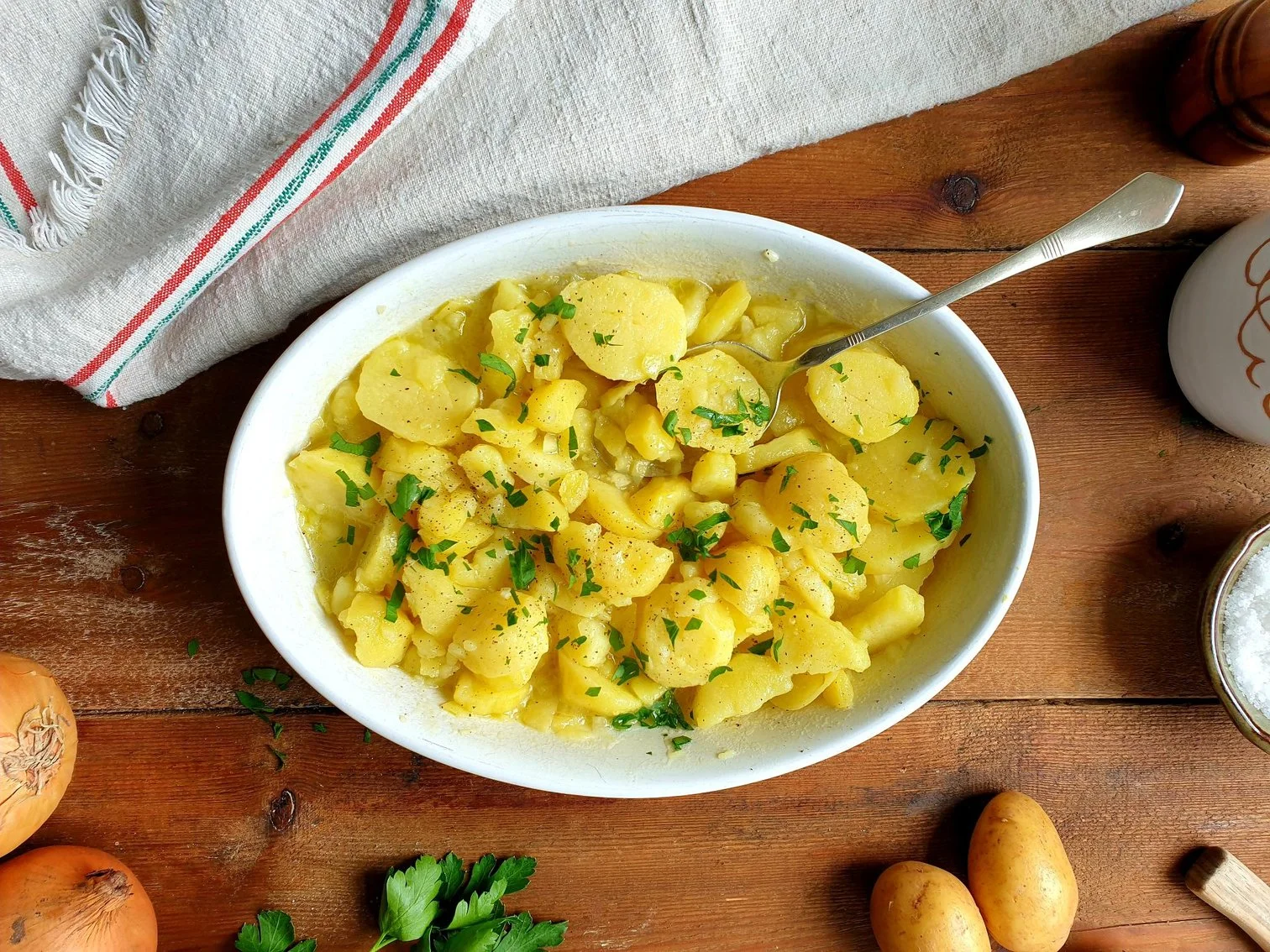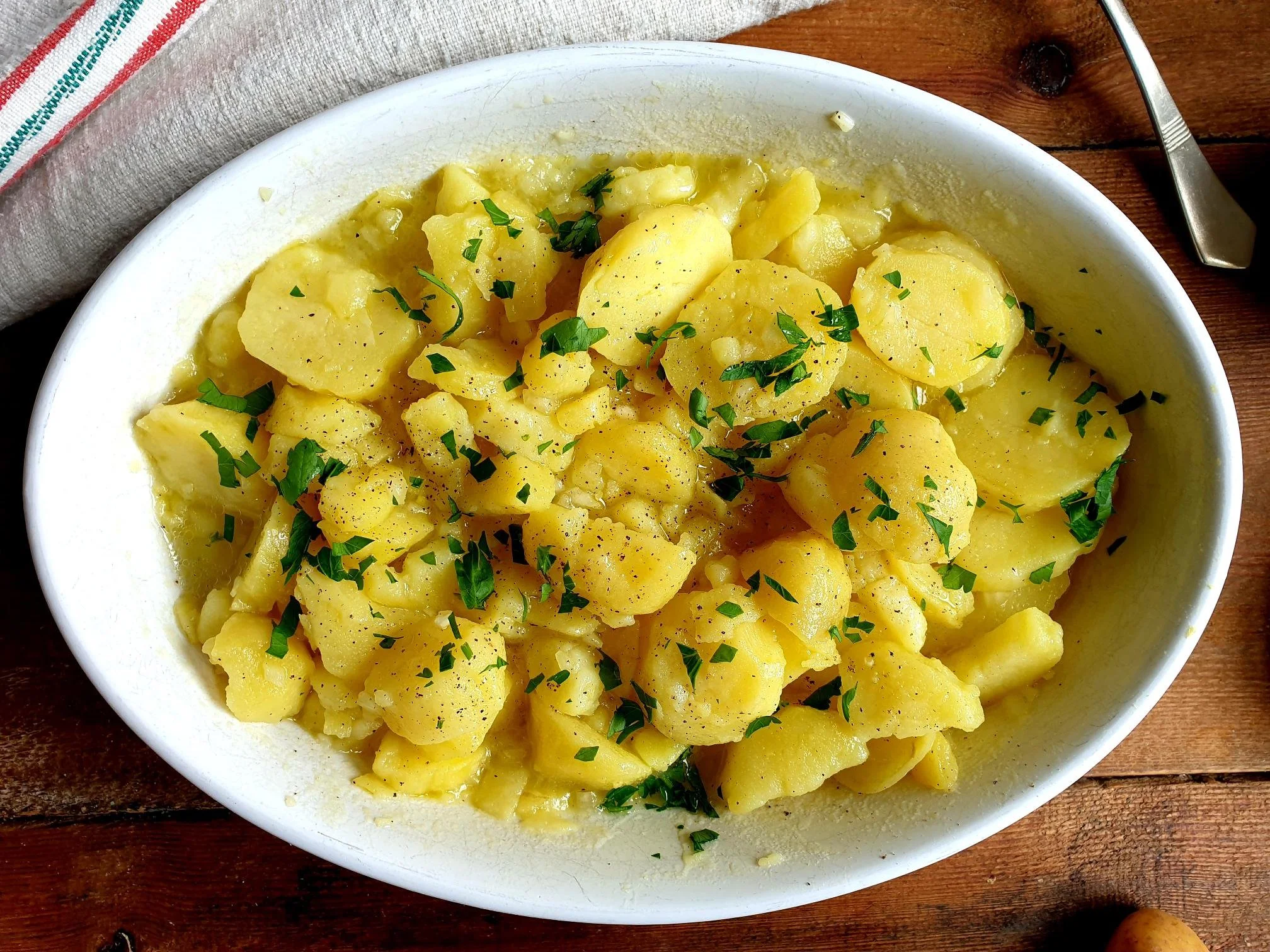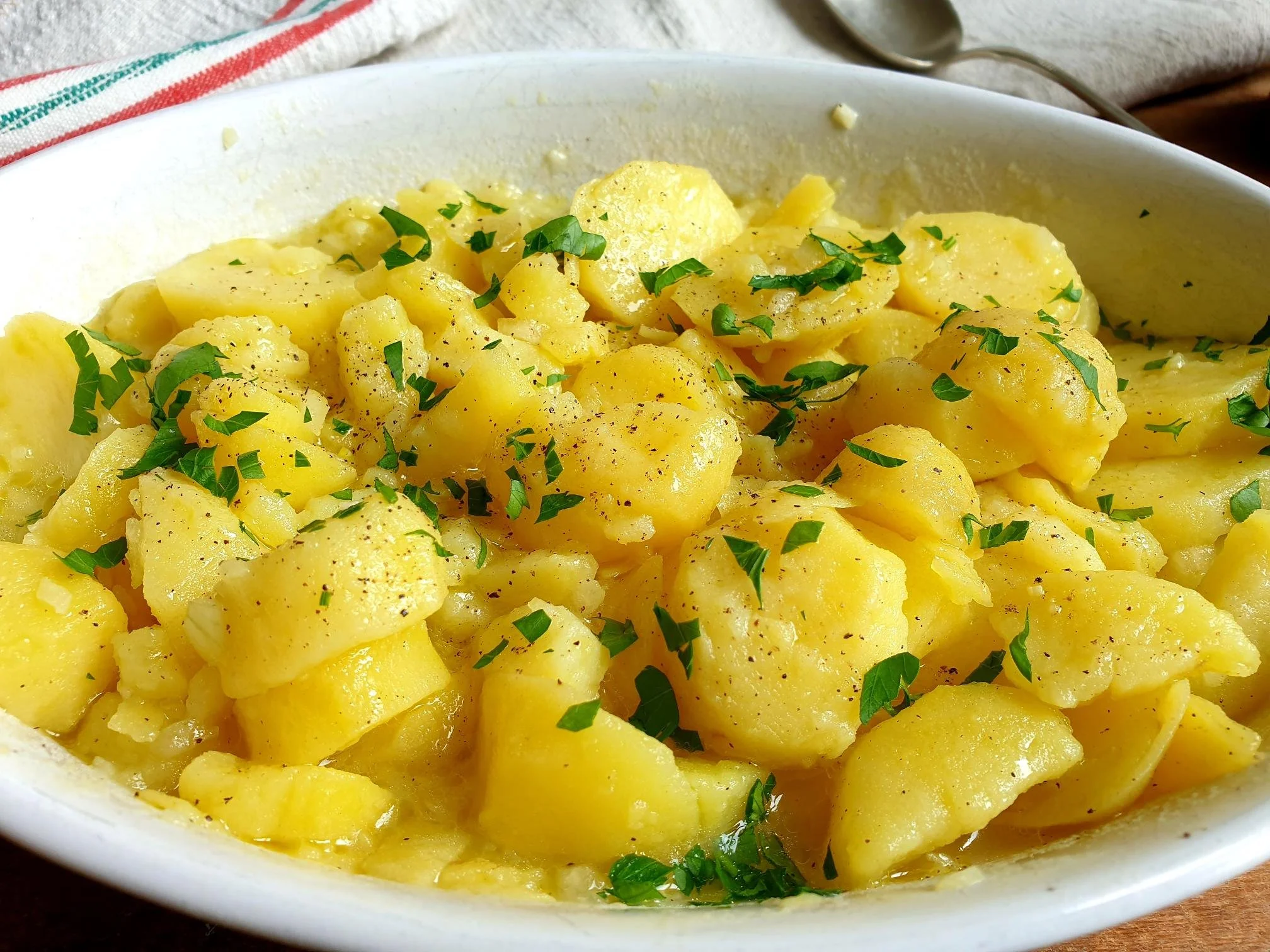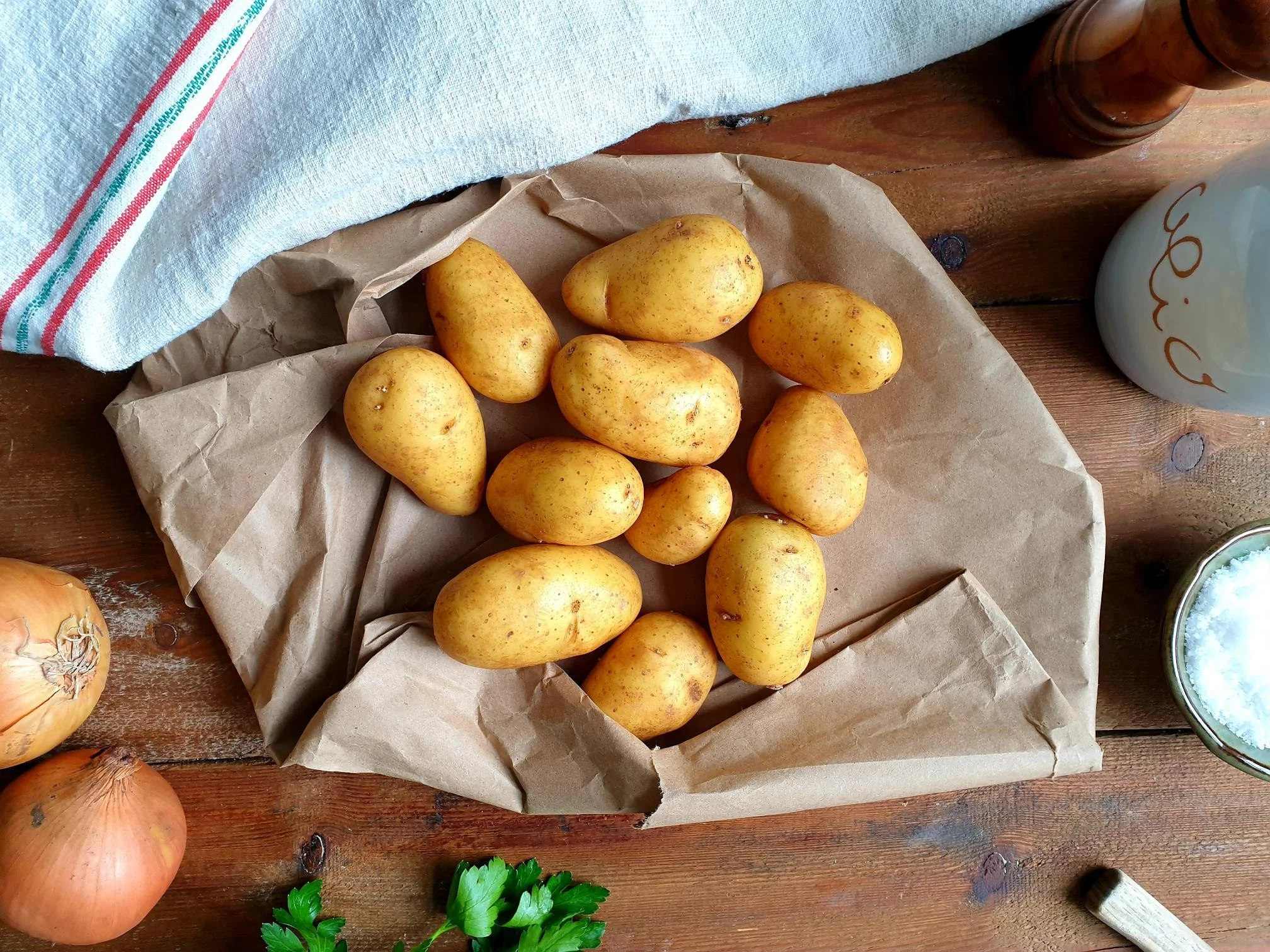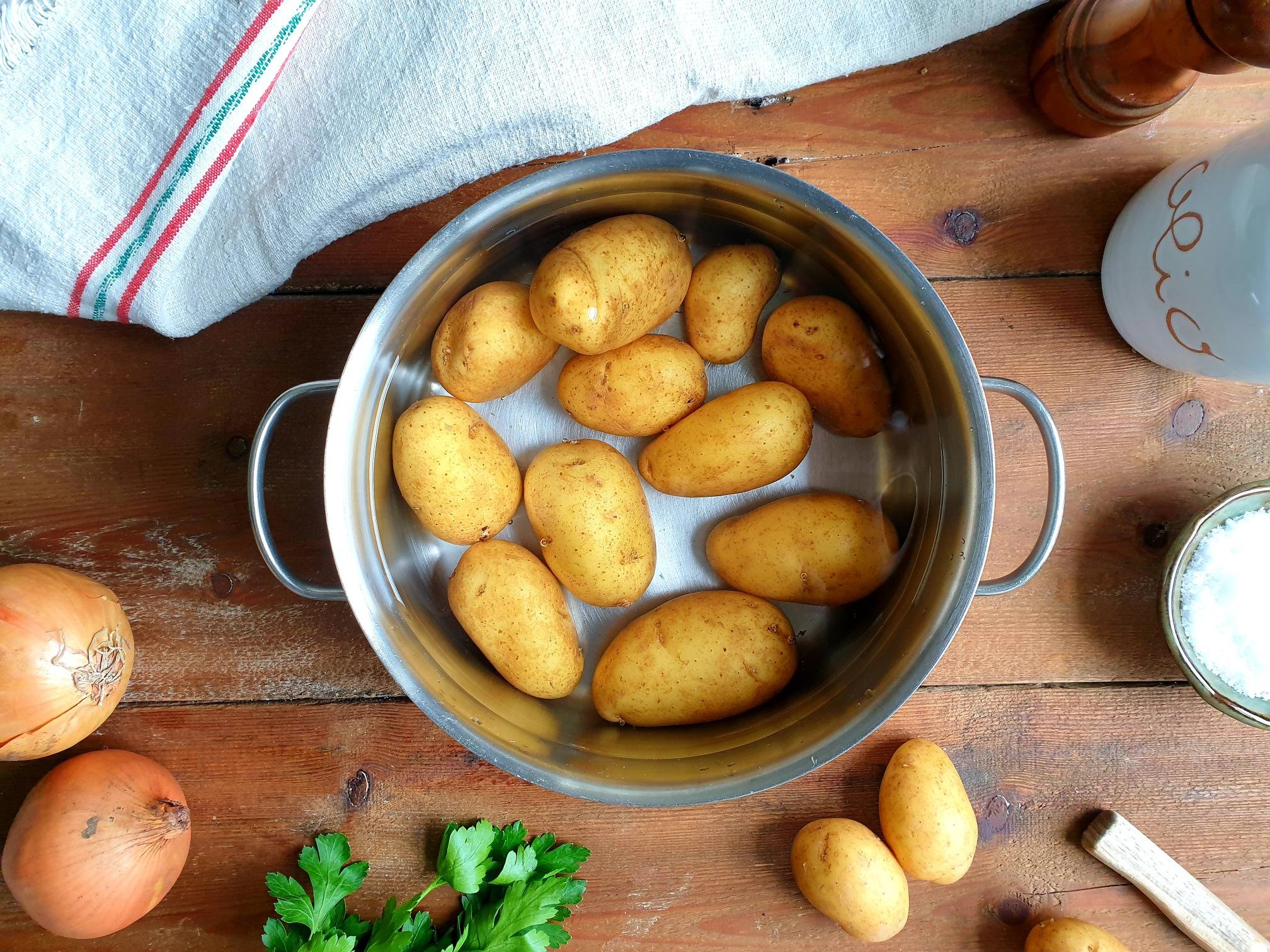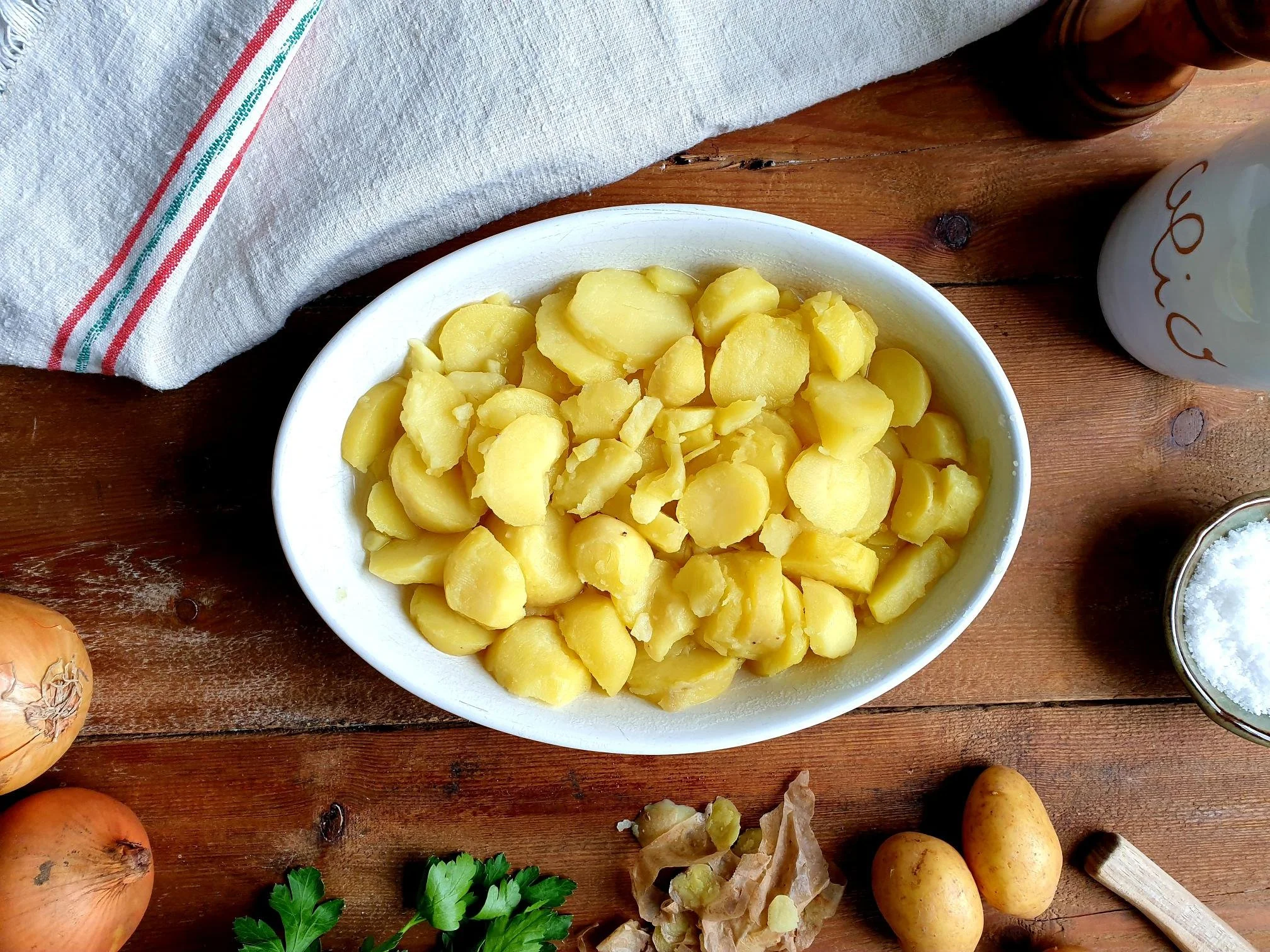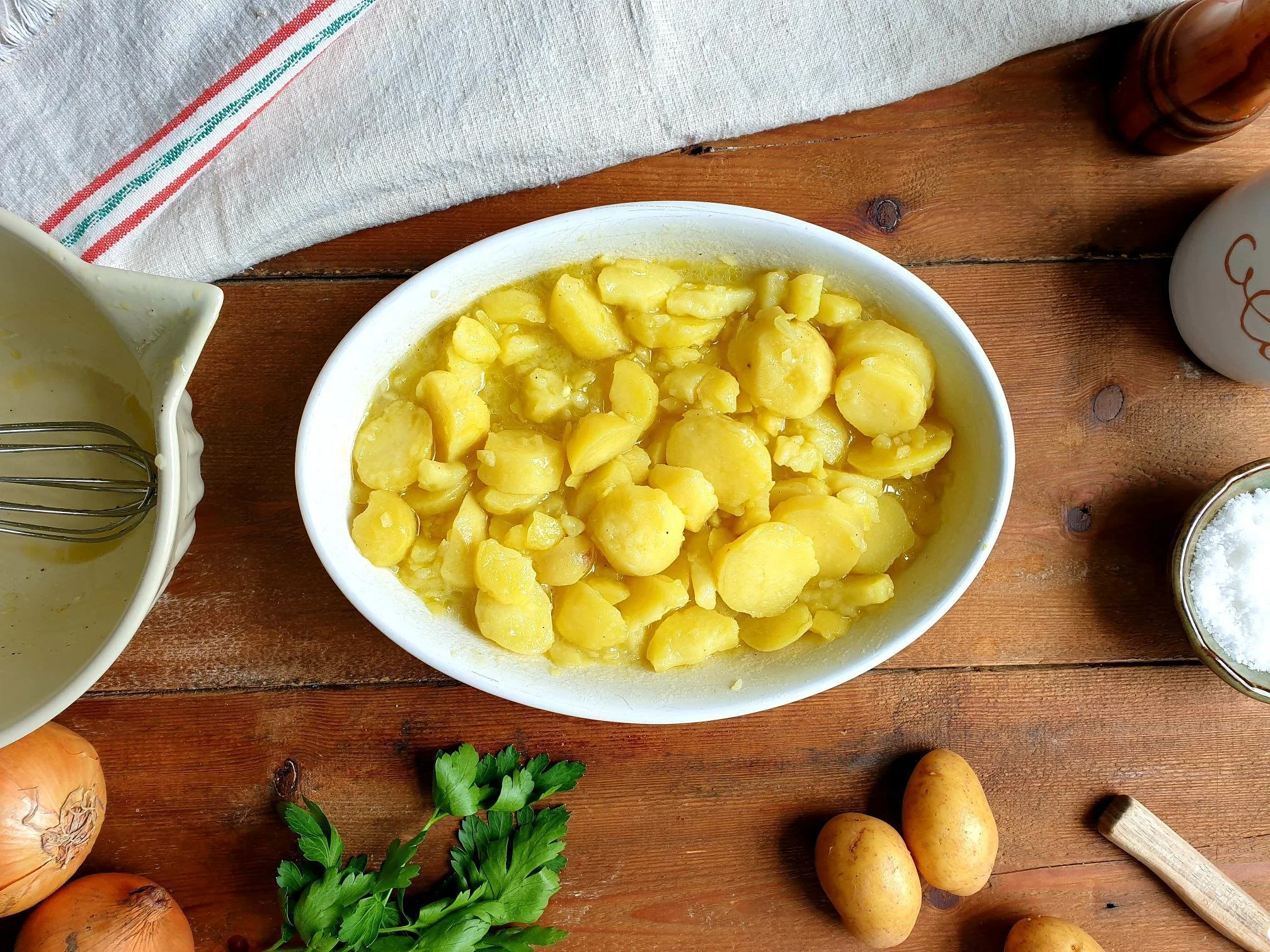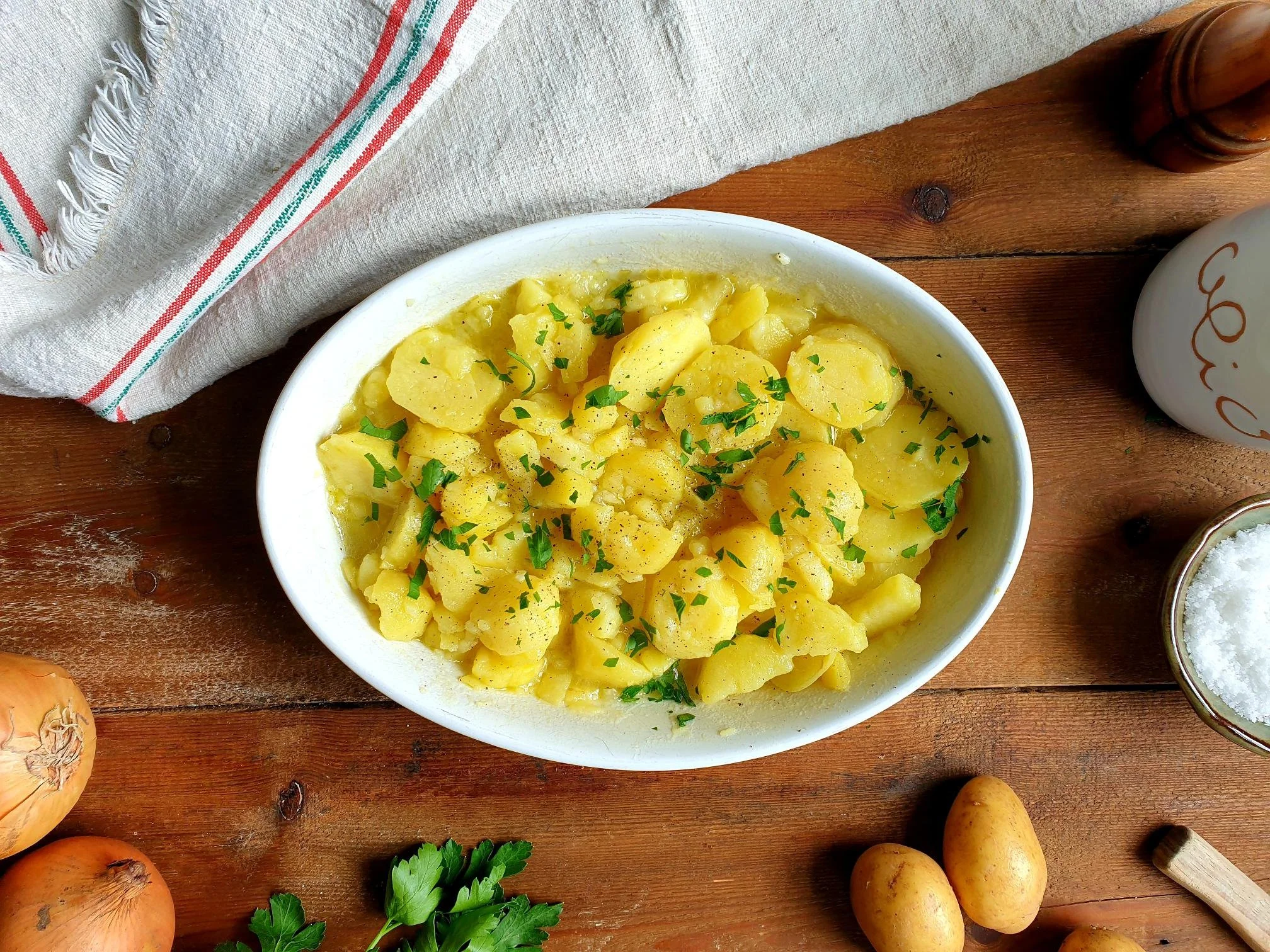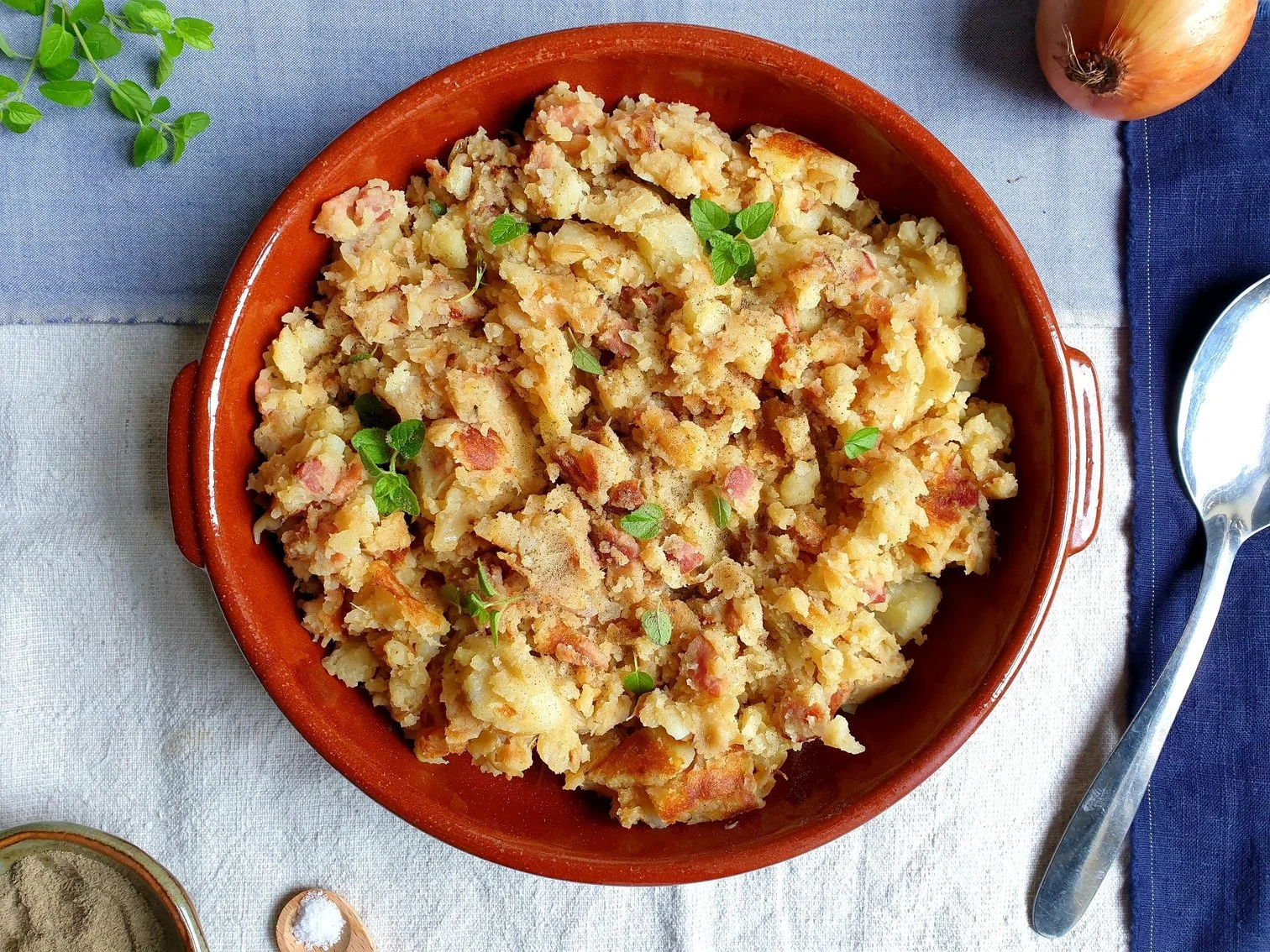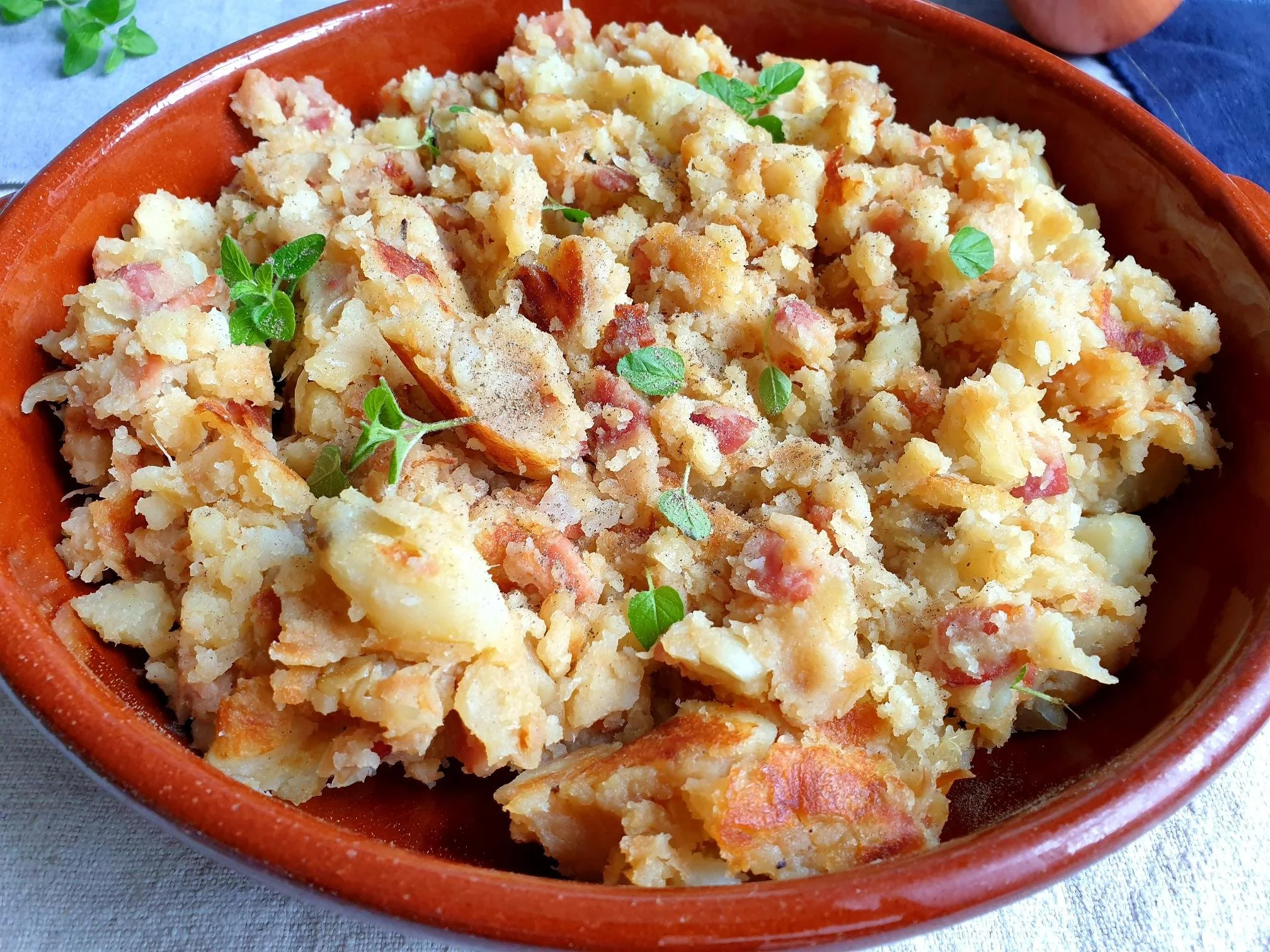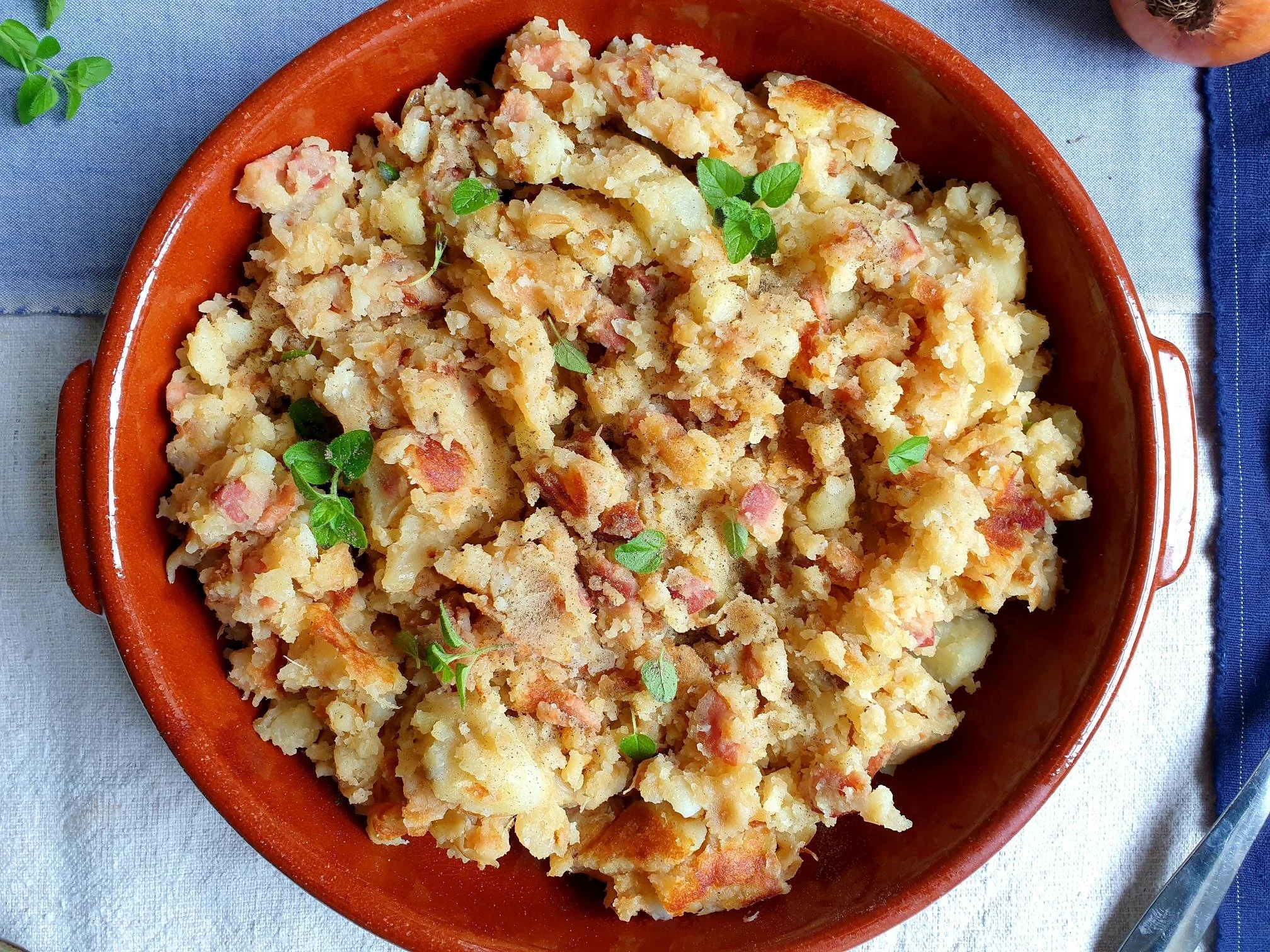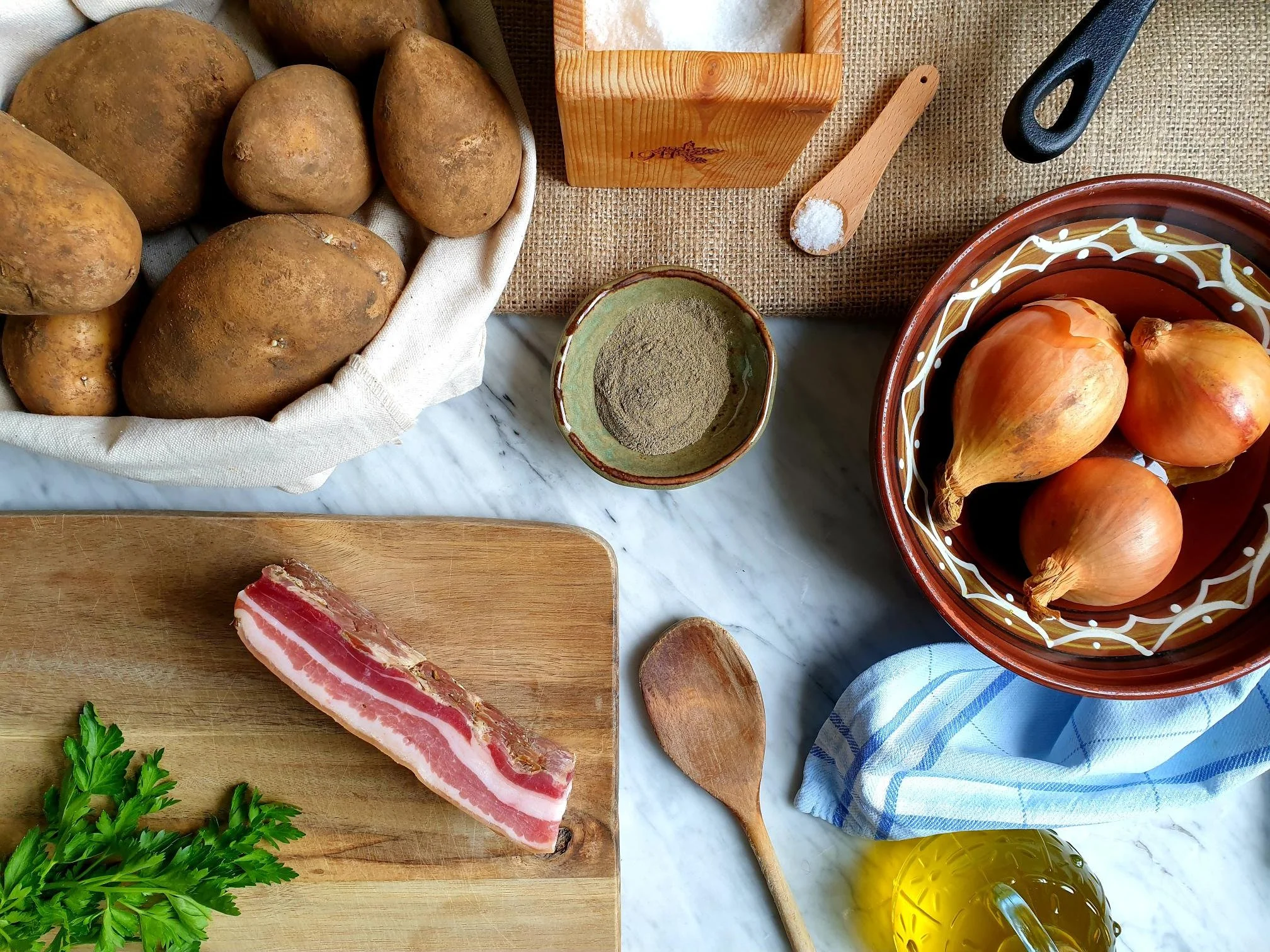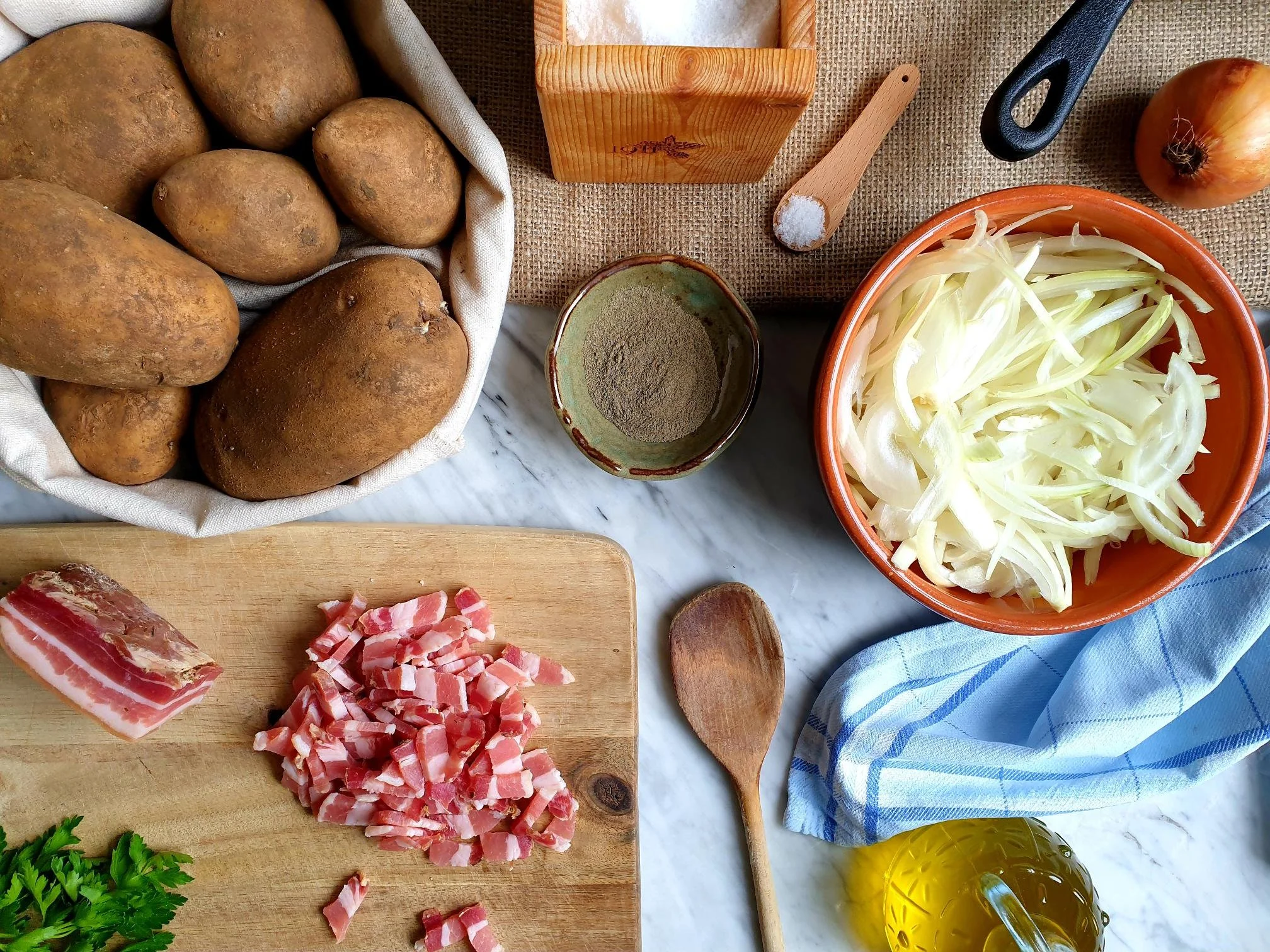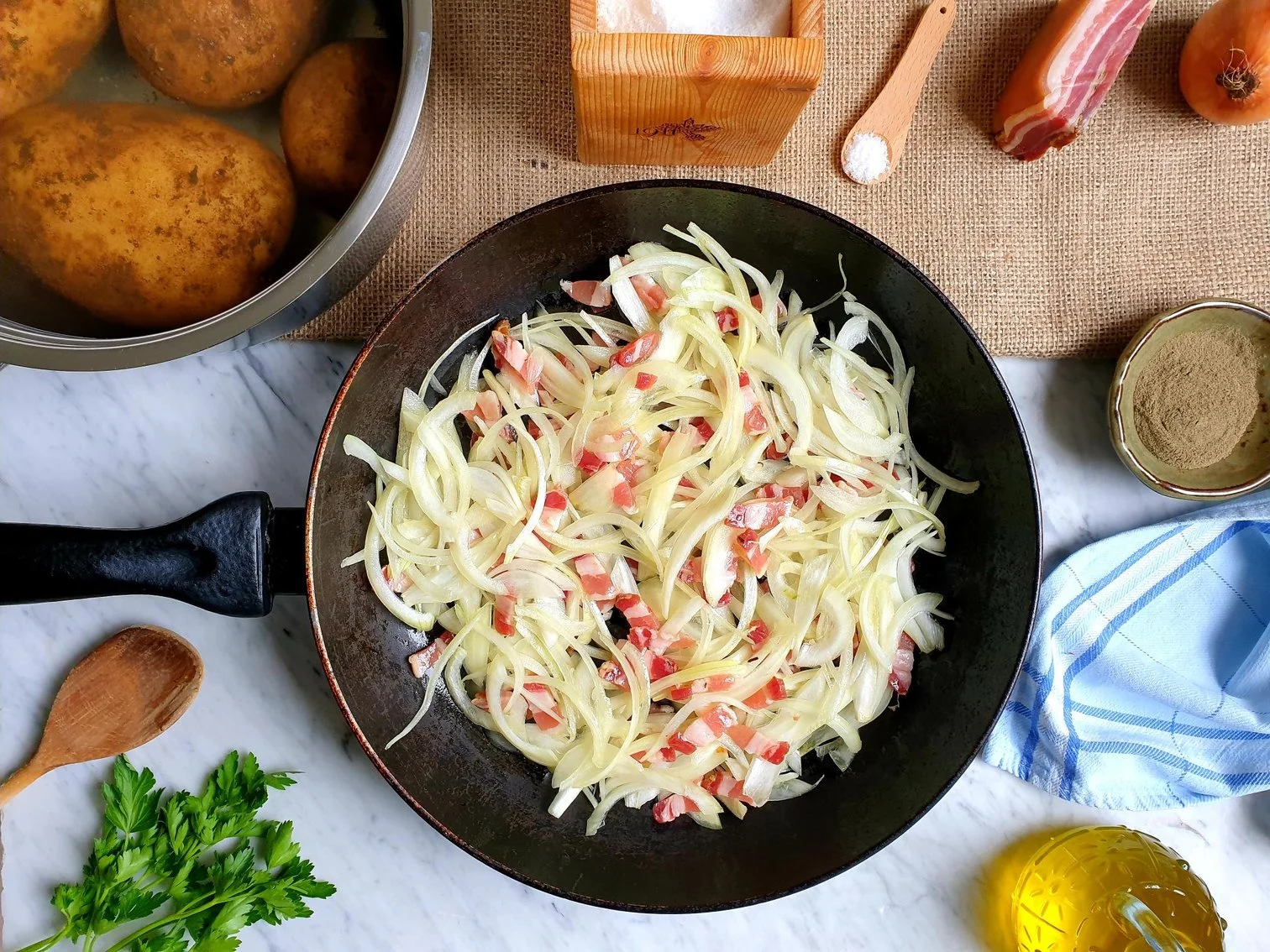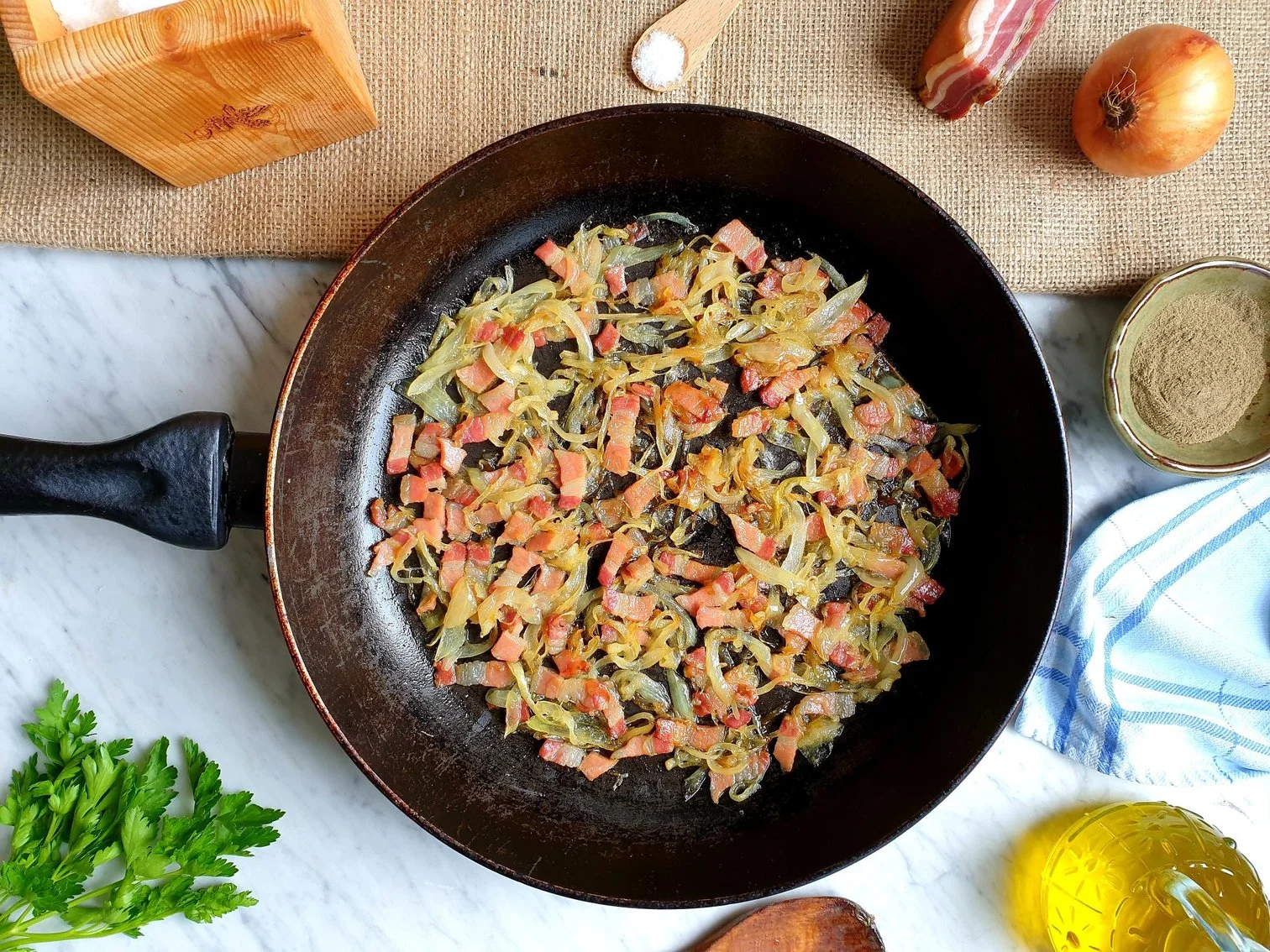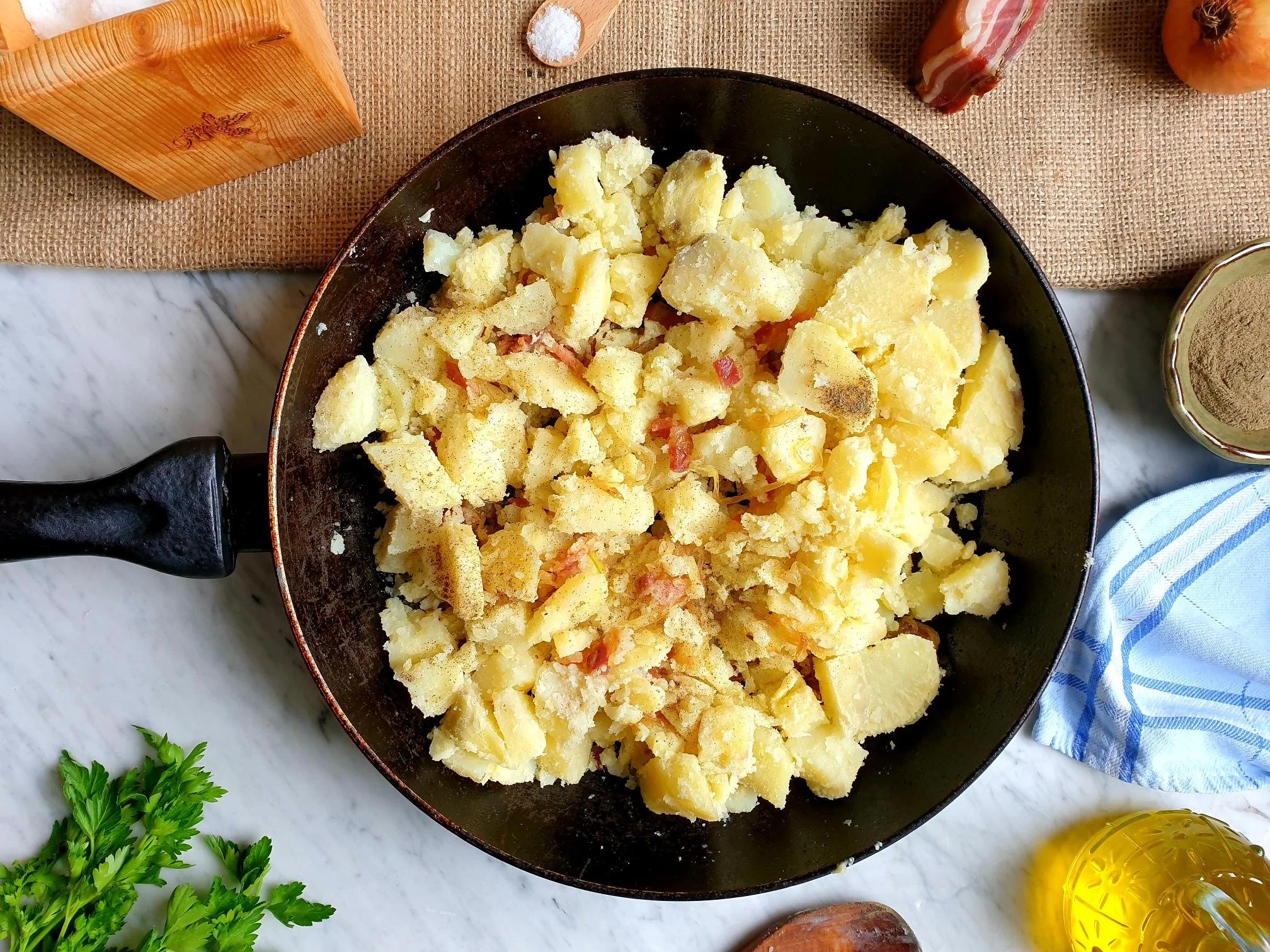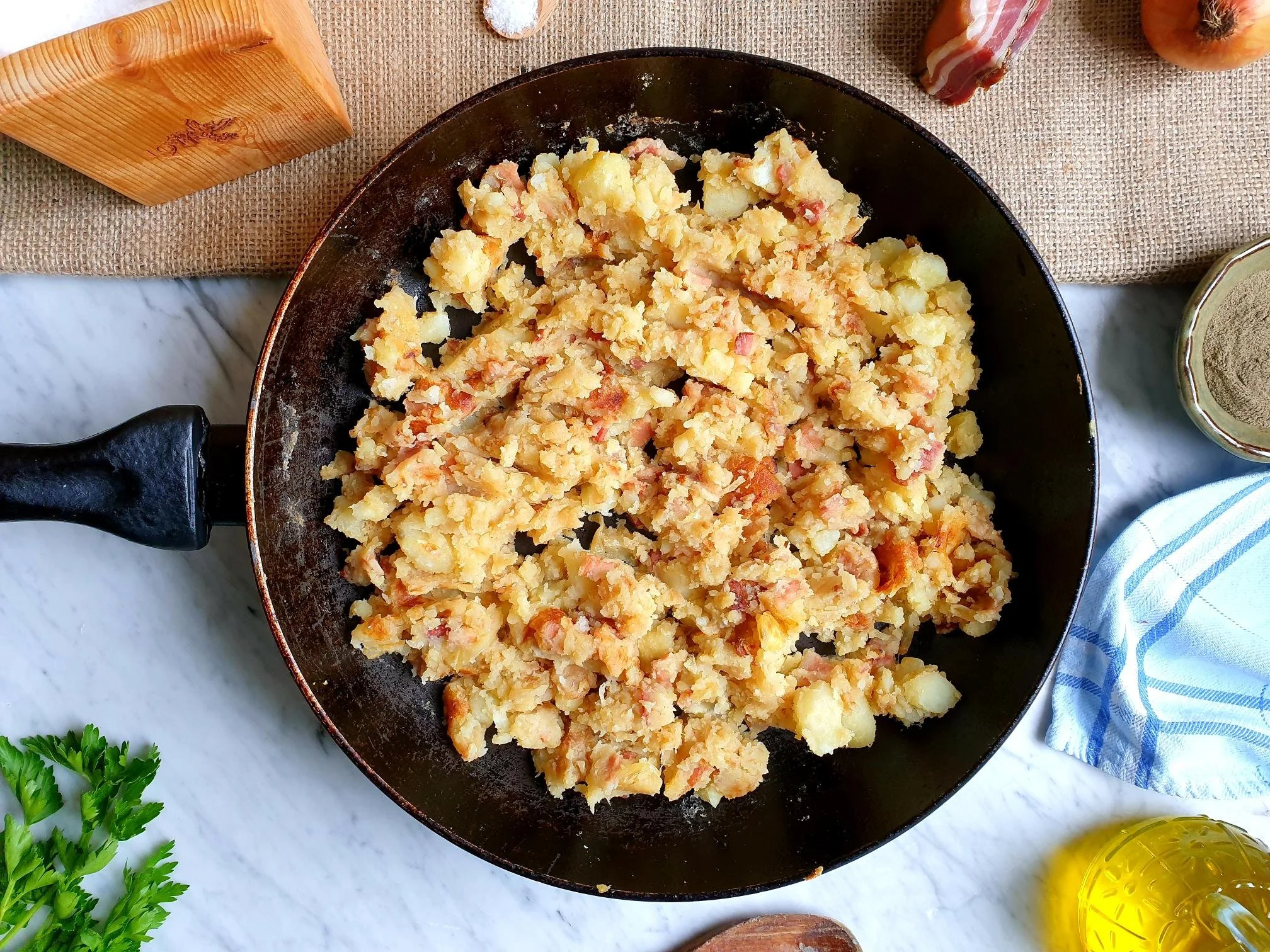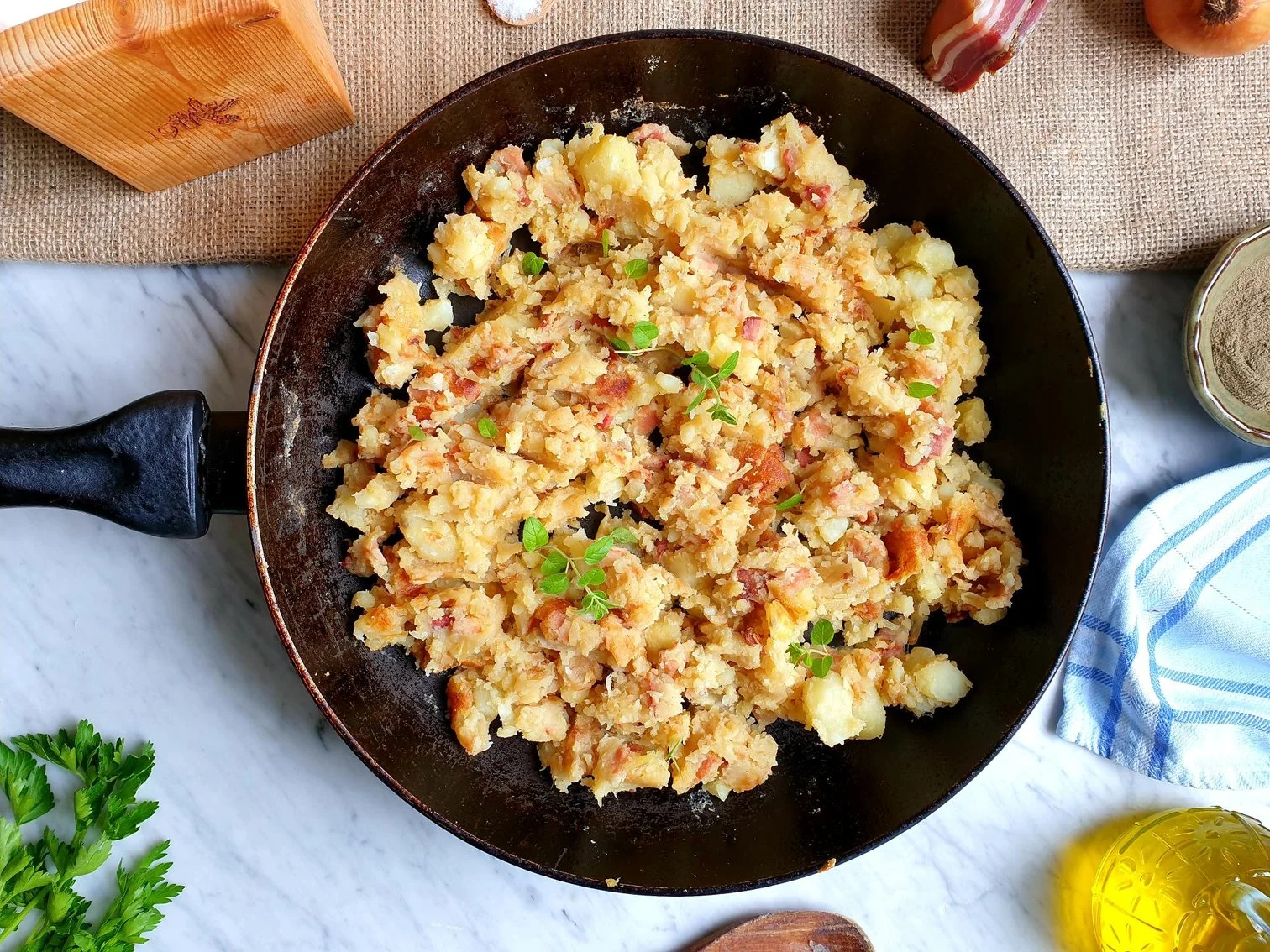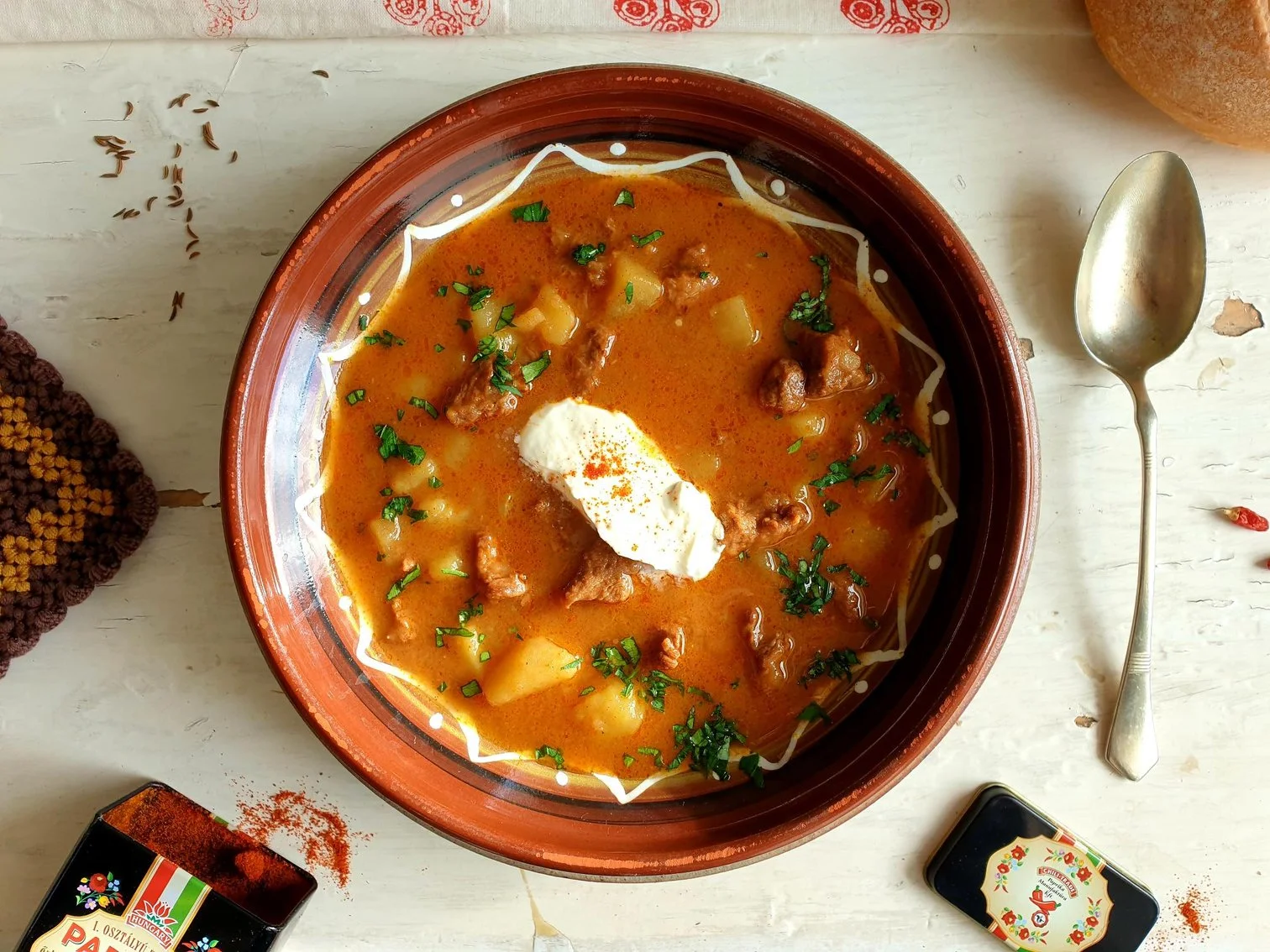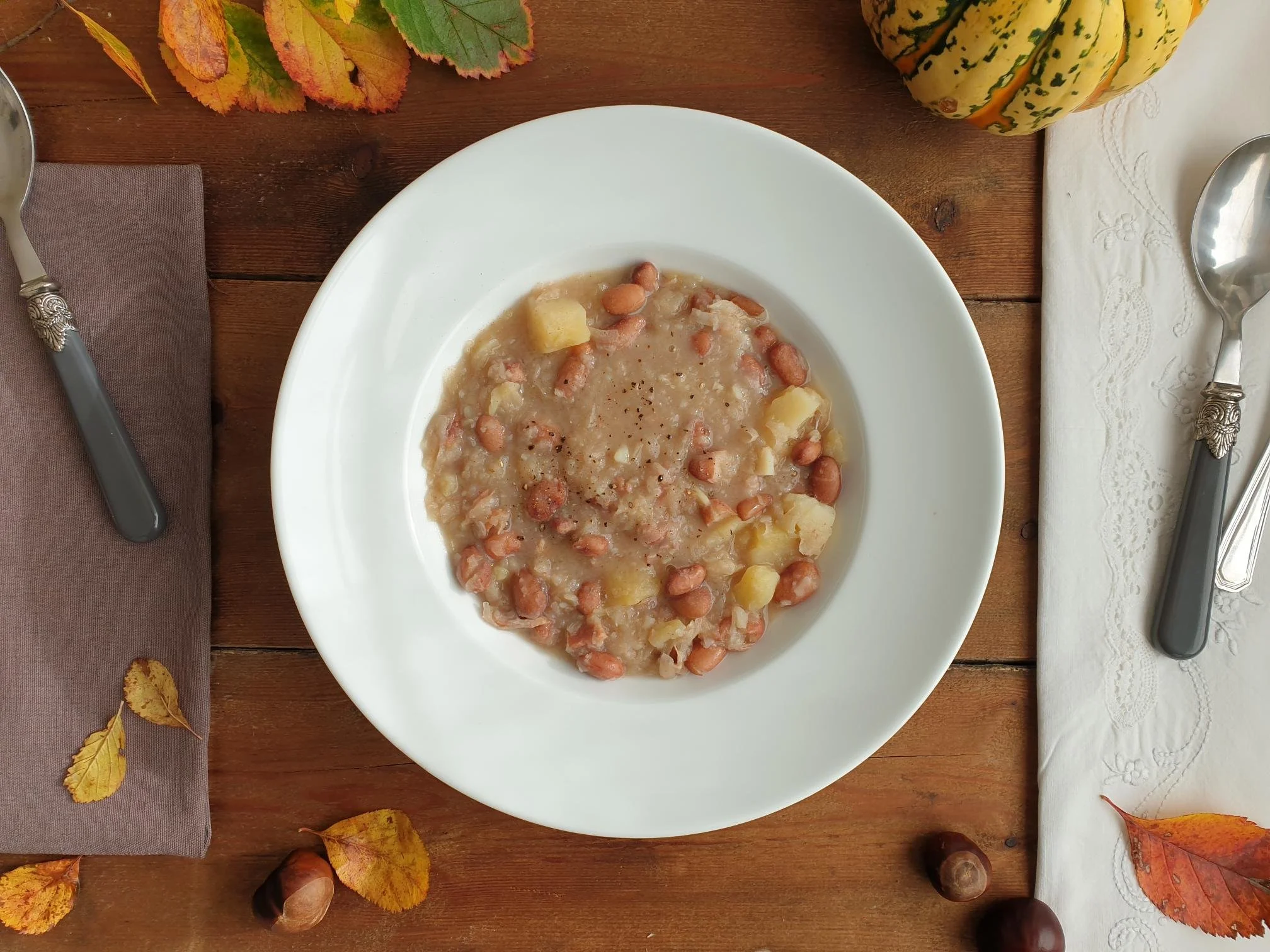Austrian Style (no mayo) Potato Salad Recipe
This recipe for Austrian style potato salad uses sliced boiled potatoes and a simple dressing made with olive oil and vinegar and no use of mayonnaise, which makes it very light and fresh.
It can be enjoyed as a main dish and it is most commonly pared with a famous Wiener schnitzel and breaded fillets of fish.
Great dish to add into your picnic baskets and great side dish to barbecued meat, fish and vegetables, and a great addition to any selection on a buffet table.
This potato salad is best made ahead allowing the potatoes to soak and absorb the light vinaigrette, this makes it very juicy and succulent.
The beauty of this salad is that it can be enjoyed and eaten warm, at a room temperature or chilled in the fridge (perfect for hot summer days).
In Slovenia, up and down the country this is a dish (Krompirjeva Solata) that is prepared in the households and canteen on a regular basis and sometimes found in local family run restaurants.
I am sharing here the recipe for this humble and very tasty potato salad that has been prepared and enjoyed for generations in my family.
To this basic potato salad you can add hard boiled eggs and other types of raw vegetables, this is not however the way it is traditionally eaten.
Recipe
Ingredients
500g waxy potatoes (like new or baby potatoes, Jersey Royal, Charlotte and similar, they have smooth and dense flesh that holds its shape when cooked; for this recipe I used miniature potatoes)
2 Tbsp extra virgin olive oil
50ml white wine vinegar (can use cider vinegar)
onion (about 30g or to taste), peeled and finely chopped, optional
fresh flat leaf parsley, chopped roughly or finely to your preference
100ml cold water
sea salt
black pepper
Method
Wash the potatoes, place them into a saucepan and cover with cold water. Bring to boil, cover with a lid and simmer until the potatoes are fully cooked and tender (for small, baby potatoes it should take between 8-12 minutes).
Alternatively, you can cook the potatoes with your preferred method like steaming or microwaving.
Drain well and peel the potatoes when still warm (as soon as you can handle them).
Slice them and transfer into a serving salad dish.
Pour over cold water and let the potatoes cool completely (pouring cold water over warm potatoes stops the potatoes absorb too much dressing, therefore the potato salad stays nice and moist).
While the potatoes are cooling, prepare the dressing.
In a small bowl pour olive oil, vinegar, sea salt, black pepper and whisk well. Add finely chopped onions.
Pour the dressing over sliced potatoes and mix very gently so the potatoes do not break completely (some will break, and this is normal).
Taste and adjust the seasoning, sprinkle with fresh parsley and serve.

